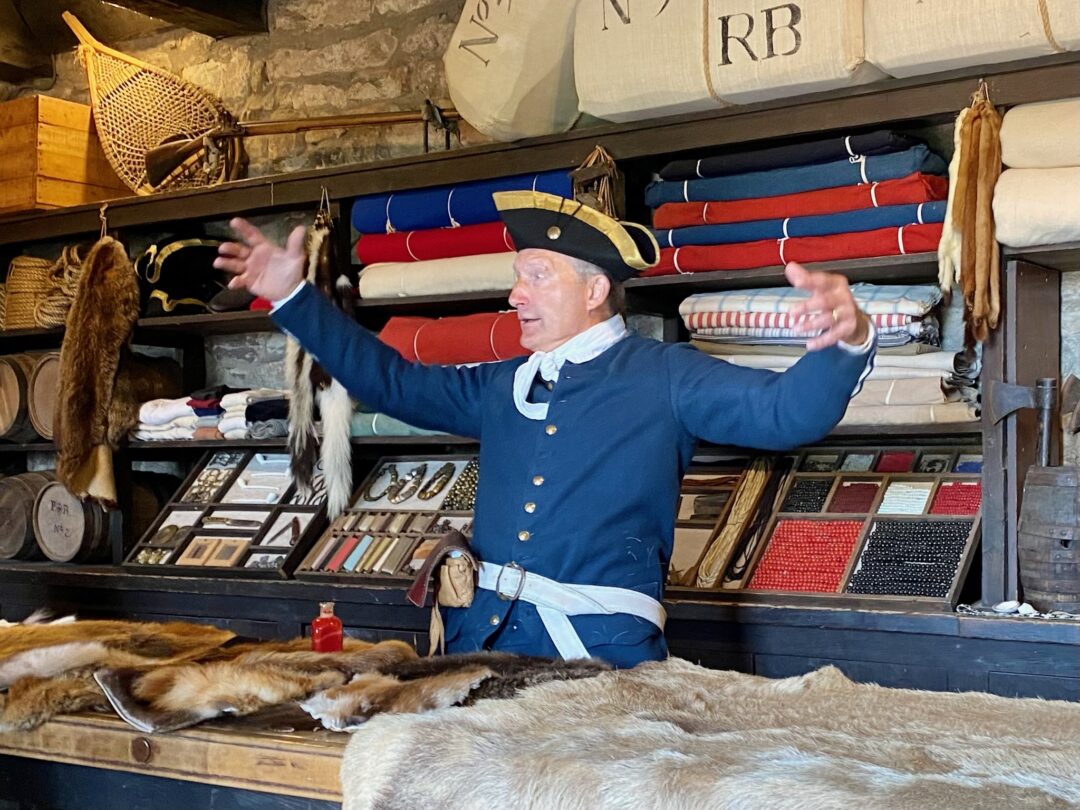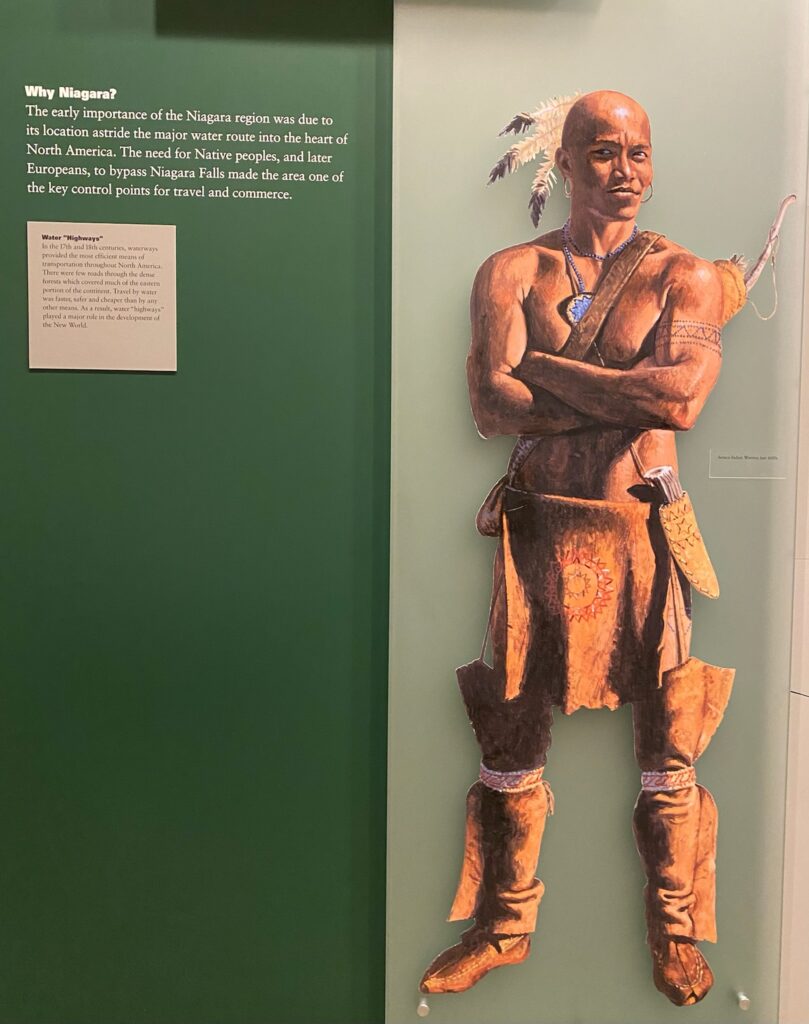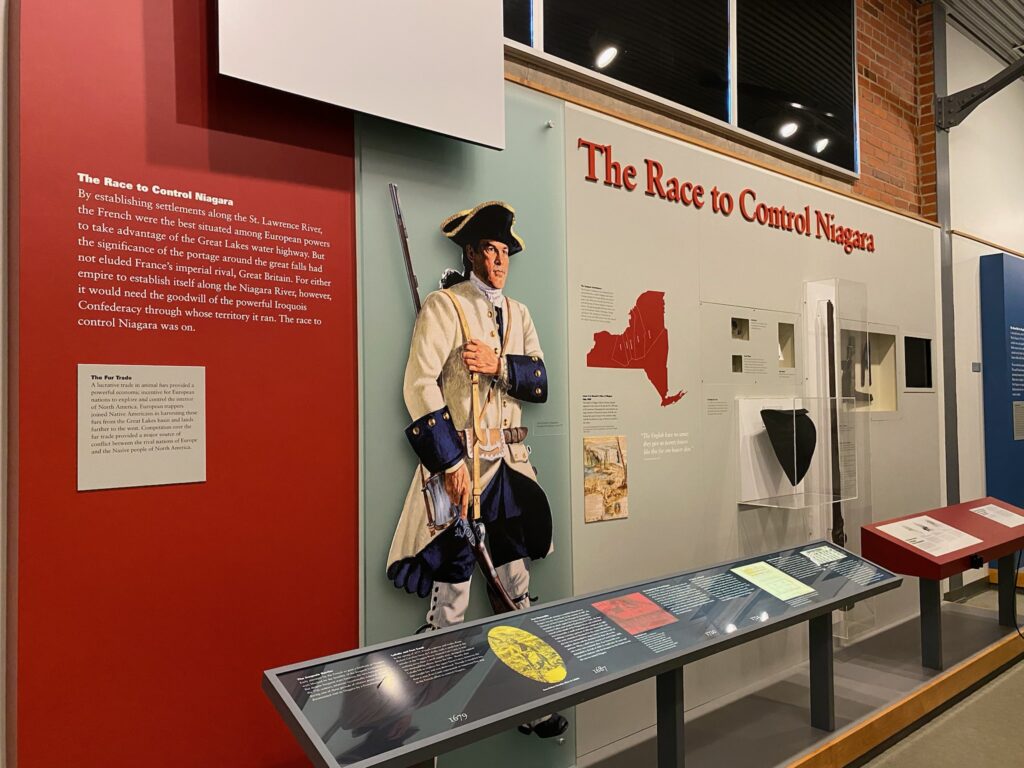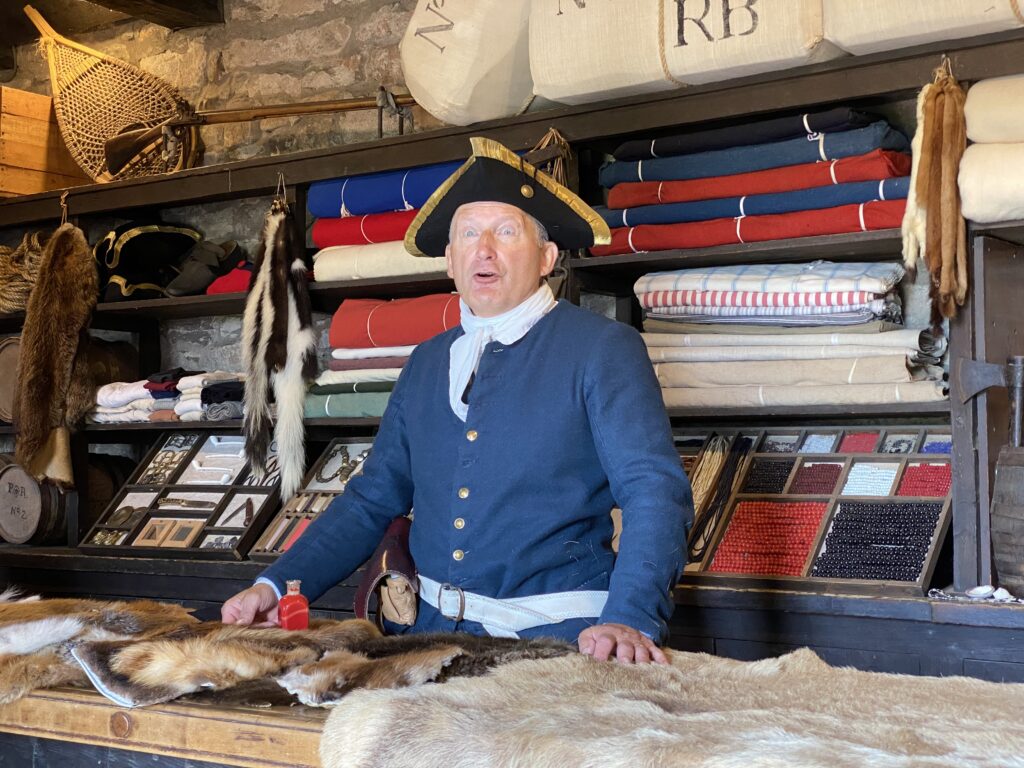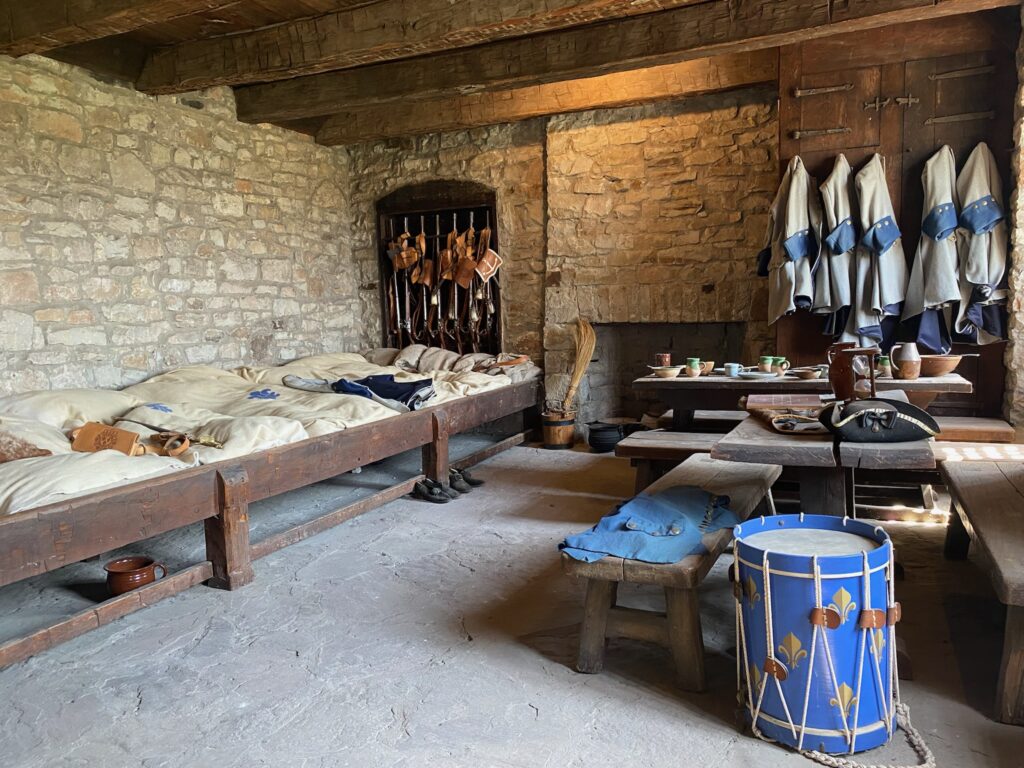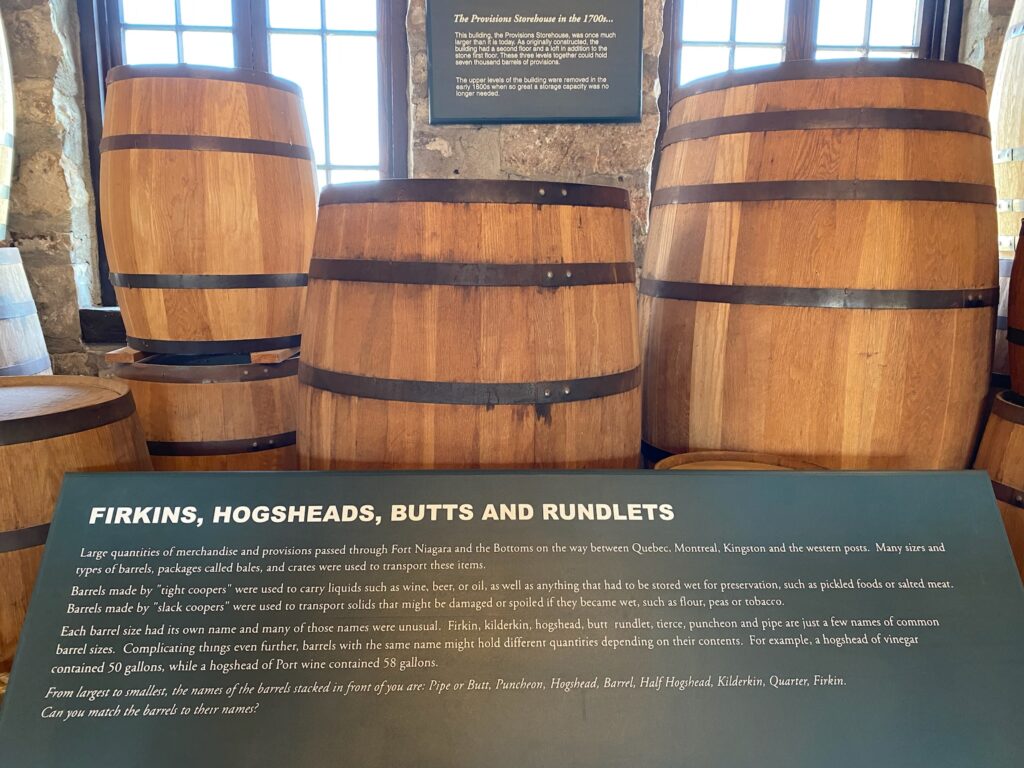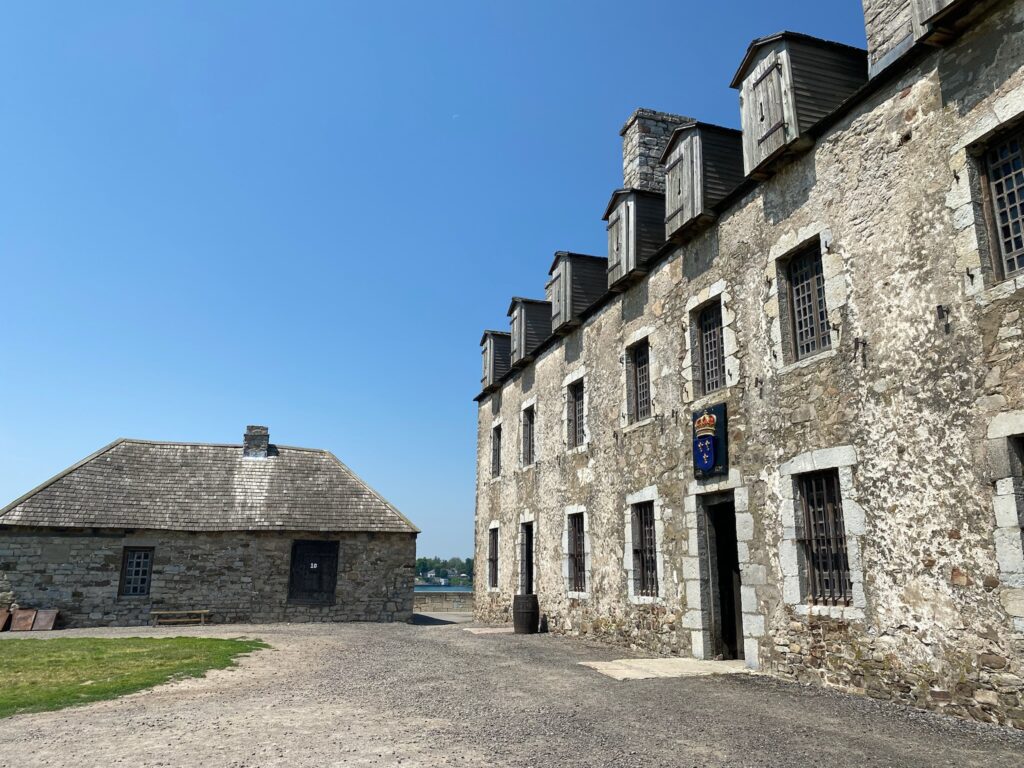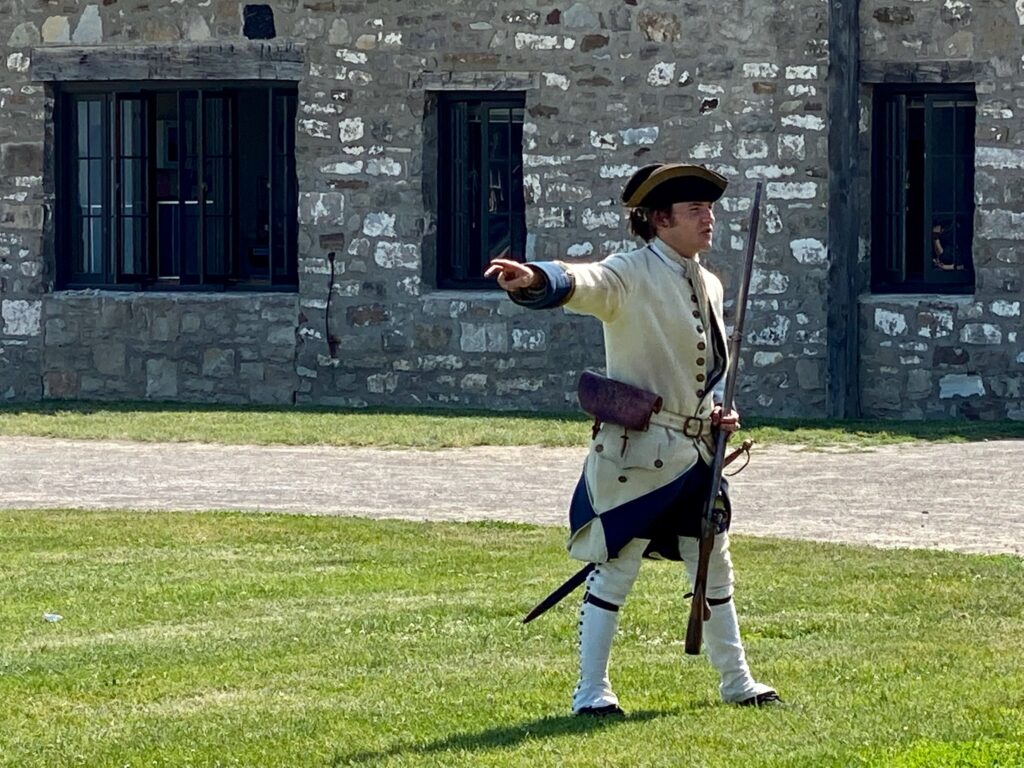From the Zippo Museum in Bradford PA (post here) we drove north through Great Valley to Four Mile Creek State Park to camp. The next day we’d planned a bike ride to Fort Niagara State Park, but it was unusually hot, around 95F. The route, however, looked like it was just a couple of miles from the campground and it was better for Bailey to stay at the campground plugged in for full a/c, so I acquiesced. We weren’t very far into the ride, when we found that we couldn’t take the 2 mile route as planned. There were signs not to use the ramp up to the highway (and rightly so), but this meant a circuitous, hot, and sticky route was required.
A few storyboards (and this random beaver that Doug swears had something to do the history here) in the visitor center explained that the area was the gateway / control point to a key portage that bypassed the Niagara Falls. The small French outpost was transformed into a European style fortress when armed confrontations started with the British over colonial interests in what’s known as the Seven Years War or French Indian War. It fell to the British after a lengthy siege during this war in 1759.
The self-guided tour included buildings where soldiers were housed, information on goods transported, and a few people in period costume who answer questions and perform demonstrations. The gentleman in the trading post was explaining that mercuric nitrate was commonly used in the 19th century to produce felt hats (thus the term the mad hatter). Mercury was also found in cinnabar a toxic mineral used on lips and cheeks that contained high amounts of mercury and lead plus vinegar made up Venetian ceruse, the pure white make-up used by Queen Elizabeth in an attempt to keep her complexion fair (which ironically only made it worse as both lead and mercury absorbed into her skin). These practices for women continued into the 19th century. He also noted that smoking was recommended for children as it was an appetite suppressant so many used this when there were food shortages.
We watched a musket demo and the young man doing the demo was a riot. He talked about the fact that rather than underwear, the French wore a very long shirt to “cover the giggly bits” and then they put on wool socks, pants, and a military jacket which really “sealed in the flavor”. He explained that three-edged “stabby thing” on the end of his musket was called a bayonet and that 3-edges were used to prevent the enemy from sewing himself back up. These were later outlawed because they were so barbaric. In the video below, he describes loading a musket and then later he fires it.
Despite the heat, it was nice to get out on the bikes and these living history museums are a great way to internalize historical events.

